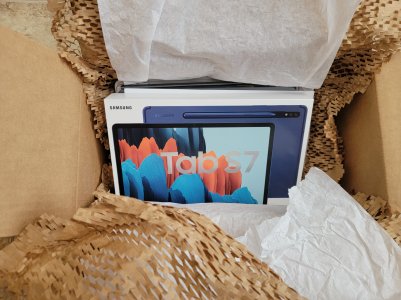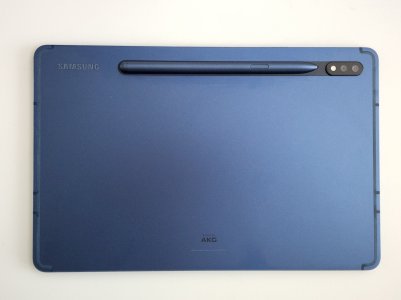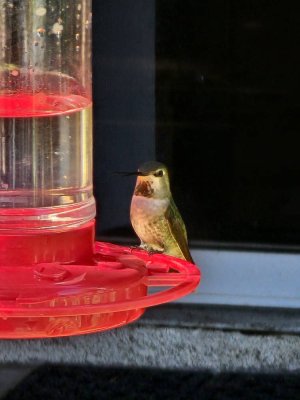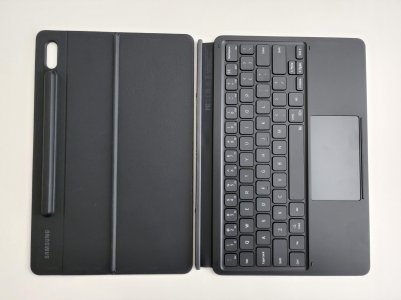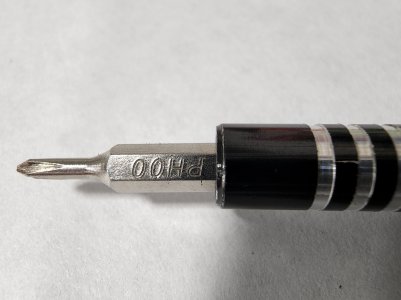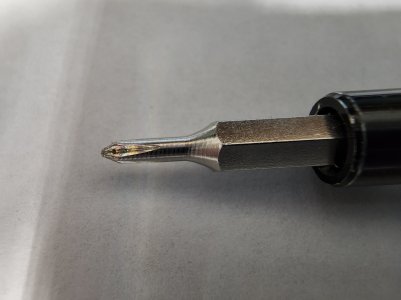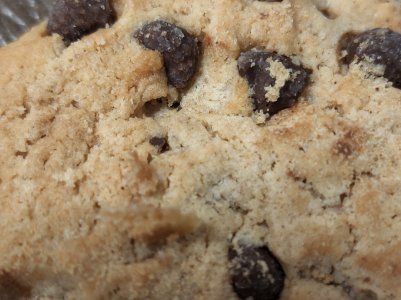S22 pictures..show us what you got!
- Thread starter atliens
- Start date
You are using an out of date browser. It may not display this or other websites correctly.
You should upgrade or use an alternative browser.
You should upgrade or use an alternative browser.
Casey Cheung
Well-known member
- Mar 7, 2011
- 1,234
- 5
- 0
Is it just my imagination or do images from the phone camera look a bit "plasticky" when magnified, especially for facial features for people from a distance? I have noticed this from all my Samsung smartphones. As a bit of context, I'm used to shooting with $30k+ worth of high-end Canon cameras and lenses. That's why I only use phone cameras for trivial stuff, but use "real" cameras for anything important. Obviously this is not a fair comparison, but still...
EMGSM
Trusted Member
- Apr 8, 2015
- 6,013
- 1
- 0
Gotta love a hummingbird that poses for ya.View attachment 342497View attachment 342498View attachment 342499
Wow that's amazing! Those little guys are pretty fast and hard to take a picture of...at least for me.
Last edited:
SpaceyO
Well-known member
- Apr 10, 2016
- 147
- 0
- 0
They learn pretty quickly who brings the full feeder out every weekWow that's amazing! Those little are pretty fast and hard to take a picture of...at least for me.

Have you seen Hector the Hummingbird yet?
https://youtube.com/shorts/KvAzg2mK6iU?feature=share
EMGSM
Trusted Member
- Apr 8, 2015
- 6,013
- 1
- 0
They learn pretty quickly who brings the full feeder out every week
Have you seen Hector the Hummingbird yet?
https://youtube.com/shorts/KvAzg2mK6iU?feature=share
So cute! Thanks for sharing that.
- Jan 8, 2011
- 13,632
- 9,428
- 113
Aww, how adorable!Gotta love a hummingbird that poses for ya.View attachment 342497View attachment 342498View attachment 342499

L0n3N1nja
Well-known member
- Jan 11, 2014
- 3,628
- 5
- 0
Is it just my imagination or do images from the phone camera look a bit "plasticky" when magnified, especially for facial features for people from a distance? I have noticed this from all my Samsung smartphones. As a bit of context, I'm used to shooting with $30k+ worth of high-end Canon cameras and lenses. That's why I only use phone cameras for trivial stuff, but use "real" cameras for anything important. Obviously this is not a fair comparison, but still...
It's not your imagination. These phone cameras are amazing but they still can't touch my 2014 Nikon D750 paired with vintage glass from the 80's. Lower resolutions combined with smoothing and AI algorithms really eliminates fine detail and produces that plastic look.
steve cooper
Active member
- Jan 9, 2016
- 31
- 0
- 0
Wow! S22 Ultra camera is really good!
I haven't had this much fun taking pictures with a phone since I got my pixel 2xl. It's fun pushing the zoom to it's limits (boardwalk regular camera and 30x) and overall the photos look really good for a phone (sunrise on the beach). Coming from a note 20 and note 10 before that, I think this is a great improvement
I haven't had this much fun taking pictures with a phone since I got my pixel 2xl. It's fun pushing the zoom to it's limits (boardwalk regular camera and 30x) and overall the photos look really good for a phone (sunrise on the beach). Coming from a note 20 and note 10 before that, I think this is a great improvement
Attachments
Re: Wow! S22 Ultra camera is really good!
I haven't had much play time with my S22U's camera yet, but I have noticed that there is absolutely no comparison for up-close shots versus my S20U. A lot of my job requires me to take pictures of car VIN numbers and other details which was near impossible with my S20U and its annoying camera issues. Now I can just nice and close and its clear as day.
That alone was the main reason I decided to upgrade.
I haven't had much play time with my S22U's camera yet, but I have noticed that there is absolutely no comparison for up-close shots versus my S20U. A lot of my job requires me to take pictures of car VIN numbers and other details which was near impossible with my S20U and its annoying camera issues. Now I can just nice and close and its clear as day.
That alone was the main reason I decided to upgrade.
Casey Cheung
Well-known member
- Mar 7, 2011
- 1,234
- 5
- 0
It's not your imagination. These phone cameras are amazing but they still can't touch my 2014 Nikon D750 paired with vintage glass from the 80's. Lower resolutions combined with smoothing and AI algorithms really eliminates fine detail and produces that plastic look.
I'm currently using the 45MP Canon R5 mirrorless camera paired with various $3k Canon "L" series fast zoom lenses, so the image quality is beyond good, haha!
Jewels81
Well-known member
- Aug 12, 2016
- 4,931
- 19
- 38
I went with the Tab S7 because it was cheaper. It's also easier for me to hold than the 7+
View attachment 342500
View attachment 342496
Congrats. I'm excited about the tab s8 ultra and can't wait to get it. More excited about that than the s22 ultra sky blue lol
EMGSM
Trusted Member
- Apr 8, 2015
- 6,013
- 1
- 0
Congrats. I'm excited about the tab s8 ultra and can't wait to get it. More excited about that than the s22 ultra sky blue lol
Lol congrats to you as well
- Mar 9, 2012
- 169,279
- 10,556
- 113
Re: Wow! S22 Ultra camera is really good!
Hope you don't mind, I merged your thread into the main S22 pictures sticky thread.
I haven't had this much fun taking pictures with a phone since I got my pixel 2xl. It's fun pushing the zoom to it's limits (boardwalk regular camera and 30x) and overall the photos look really good for a phone (sunrise on the beach). Coming from a note 20 and note 10 before that, I think this is a great improvement
Hope you don't mind, I merged your thread into the main S22 pictures sticky thread.
Is it just my imagination or do images from the phone camera look a bit "plasticky" when magnified, especially for facial features for people from a distance? I have noticed this from all my Samsung smartphones. As a bit of context, I'm used to shooting with $30k+ worth of high-end Canon cameras and lenses. That's why I only use phone cameras for trivial stuff, but use "real" cameras for anything important. Obviously this is not a fair comparison, but still...
What you're seeing is usually noise reduction. The sensors in virtually every smartphone, even if they are large by smartphone standards, are extremely small when compared to something in a full-frame DSLR or Mirrorless camera, for example. On top of that, with the exception of the main and ultra-wide camera, apertures are quite small, further hampering light collecting ability. To compensate and achieve a shutter speed that doesn't result in complete garbage, the ISO is raised a lot and because the general public prefers a soft noise-free image over a noisy, sharper image, they get obliterated by noise reduction. Every smartphone has to play by the same rules of physics. So when you see a night shot taken for instance with the 10X lens with a F4.9 aperture and it's extremely tiny sensor (even relative to the main camera's sensor it's small), there is only so much you can do. The (night time?) hummingbird shots above were likely taken with the 10X lens, which is by far the slowest.
The reason night mode looks so much better is twofold. 1) The long shutter speed allows for the greatest amount of light collection, and 2) Since noise occurs randomly in any given image, stacking many images together reduces the average noise ceiling, as well as helps the AI reduce motion blur.
Comparing these results to your full-frame camera equipment is a night & day difference as you have acknowledged. Take a JPEG image (so the camera processes it with plenty of NR) with your R5 at ISO 51,200 or something equivalent to the stress put on these tiny camera phone sensors at ISO 1600 or so, and you will see a similar effect. One extra benefit you have with your R5 though is resolution, which dramatically improves perceived image quality when viewed at small sizes like we often do on the web.
The 10MP sensor used in the 10X lens of the S22 Ultra is 1/3.52". To help put that in perspective, your full-frame Canon R5 has an image sensor area approximately 72 times larger. What companies like Samsung can get out of these tiny sensors is nothing short of amazing, but they will never come even remotely close to an image taken with a full-frame camera, especially if scrutinized beyond low-resolution web images. In good light and ideal conditions though, basically every modern camera regardless of price can produce a good image.
Last edited:
Borgie
Well-known member
- Jun 6, 2010
- 715
- 257
- 63
Casey Cheung
Well-known member
- Mar 7, 2011
- 1,234
- 5
- 0
What you're seeing is usually noise reduction. The sensors in virtually every smartphone, even if they are large by smartphone standards, are extremely small when compared to something in a full-frame DSLR or Mirrorless camera, for example. On top of that, with the exception of the main and ultra-wide camera, apertures are quite small, further hampering light collecting ability. To compensate and achieve a shutter speed that doesn't result in complete garbage, the ISO is raised a lot and because the general public prefers a soft noise-free image over a noisy, sharper image, they get obliterated by noise reduction. Every smartphone has to play by the same rules of physics. So when you see a night shot taken for instance with the 10X lens with a F4.9 aperture and it's extremely tiny sensor (even relative to the main camera's sensor it's small), there is only so much you can do. The (night time?) hummingbird shots above were likely taken with the 10X lens, which is by far the slowest.
The reason night mode looks so much better is twofold. 1) The long shutter speed allows for the greatest amount of light collection, and 2) Since noise occurs randomly in any given image, stacking many images together reduces the average noise ceiling, as well as helps the AI reduce motion blur.
Comparing these results to your full-frame camera equipment is a night & day difference as you have acknowledged. Take a JPEG image (so the camera processes it with plenty of NR) with your R5 at ISO 51,200 or something equivalent to the stress put on these tiny camera phone sensors at ISO 1600 or so, and you will see a similar effect. One extra benefit you have with your R5 though is resolution, which dramatically improves perceived image quality when viewed at small sizes like we often do on the web.
The 10MP sensor used in the 10X lens of the S22 Ultra is 1/3.52". To help put that in perspective, your full-frame Canon R5 has an image sensor area approximately 72 times larger. What companies like Samsung can get out of these tiny sensors is nothing short of amazing, but they will never come even remotely close to an image taken with a full-frame camera, especially if scrutinized beyond low-resolution web images. In good light and ideal conditions though, basically every modern camera regardless of price can produce a good image.
I like your detailed explanation, good stuff! Yes, I knew it wasn't a fair comparison. A "real" camera wins every time, especially a high-end camera with major sensor quality resolution. But yeah, I just wanted to point out that people's facial features can look plasticky to me anytime a smartphone camera is used. Since I shoot portraits as my specialty (going back to my yester-years of shooting weddings and portraits), I always have to use my "real" cameras for anything important, especially for paid gigs. I only use my phone camera for trivial stuff and short videos. Picture quality on any phone camera is always lacking in my eyes, but I have a different perspective.
Morty2264
Ambassador
- Mar 6, 2012
- 22,921
- 1,058
- 113
Similar threads
- Replies
- 3
- Views
- 6K
- Replies
- 0
- Views
- 2K
- Replies
- 11
- Views
- 8K
- Replies
- 14
- Views
- 5K
Trending Posts
-
Samsung S23 to Pixel Pro 10?
- Started by cohoman
- Replies: 1
-
-
-
-
Members online
Total: 3,816 (members: 13, guests: 3,803)
Forum statistics

Space.com is part of Future plc, an international media group and leading digital publisher. Visit our corporate site.
© Future Publishing Limited Quay House, The Ambury, Bath BA1 1UA. All rights reserved. England and Wales company registration number 2008885.

